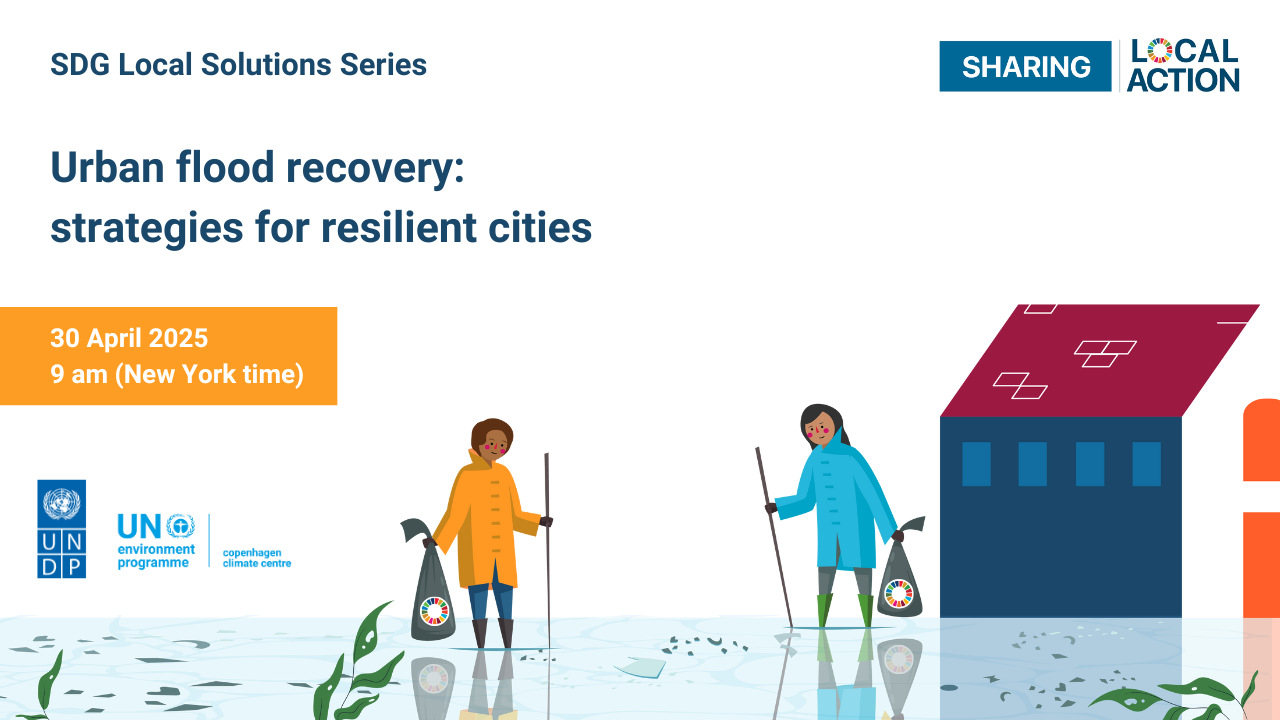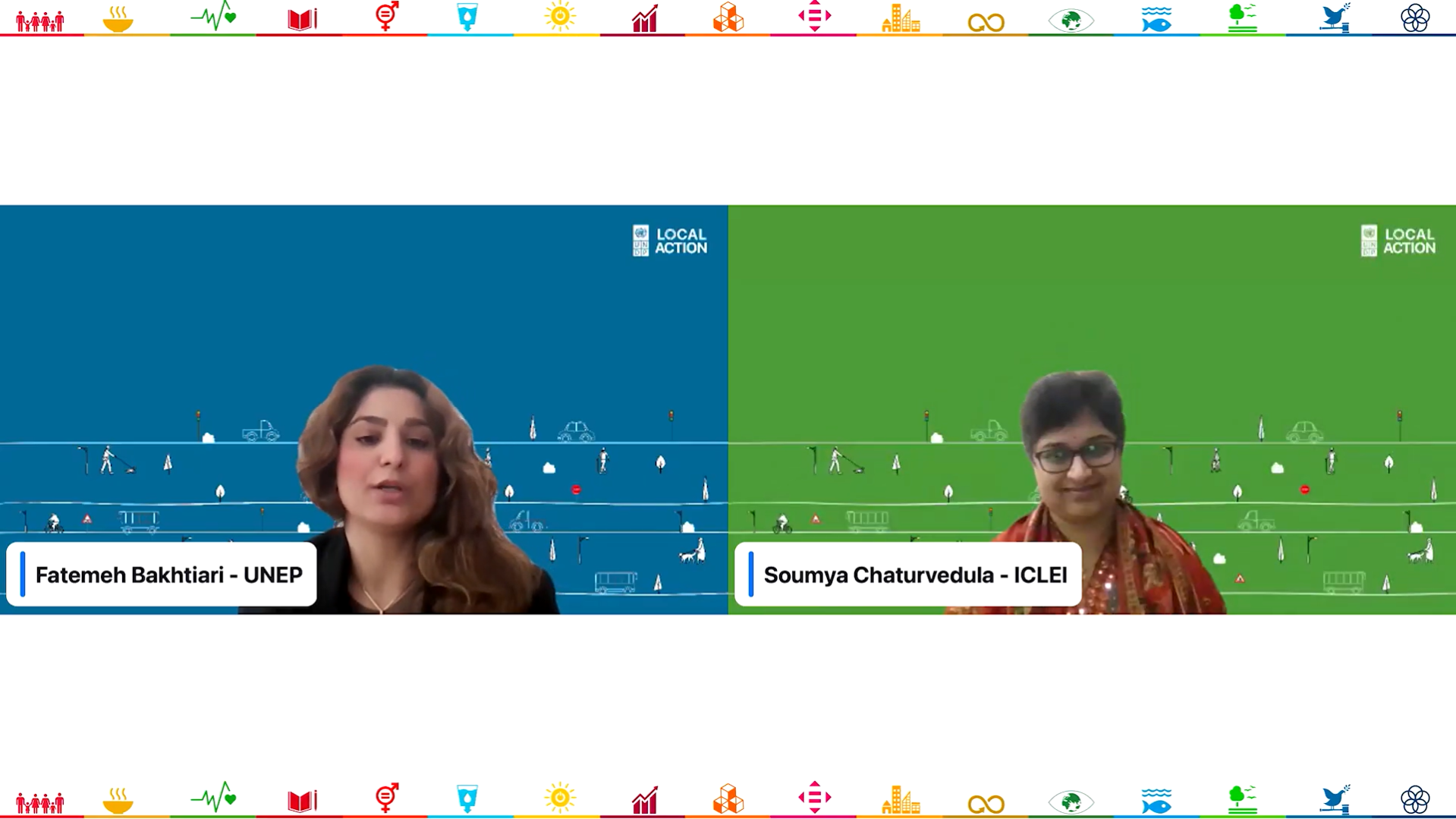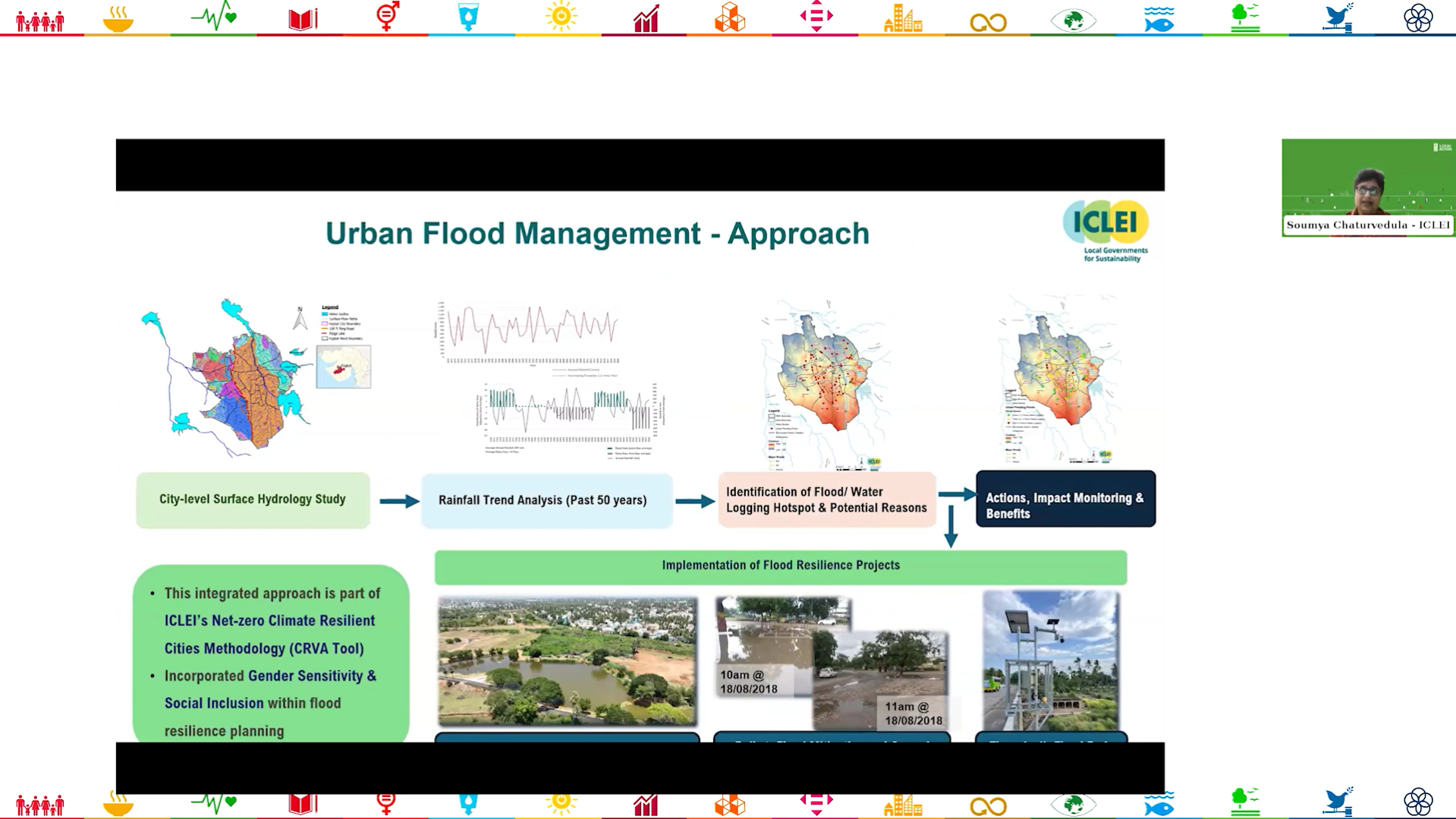Storms, Systems, and Solutions: ICLEI Leads the Way in Urban Flood Governance

Several parts of India are grappling with wide-spread flooding as an early onset of monsoon, eight days ahead of schedule, surprised the Indian subcontinent. For urban centres already teetering under inadequate and poorly performing infrastructure, this year’s advanced monsoon is a warning. The big question is: Are our cities equipped to deal with the wavering severity of urban floods?
Vulnerable, low-lying areas, localities adjacent to drains, streams and rivers, and even entire cities have been inundated in recent times.Impervious urban spaces such as concrete roads and a lack of nature-based solutions that hinder percolation, and inadequate runoff management systems such stormwater drainage systems lead to urban flooding. In mountainous regions, rapid snowmelt adds to the problem, hitherto considered well-equipped, bearing the brunt of changing rainfall patterns. Mitigating urban flooding is no longer just a planning challenge; it is a governance, equity, and climate resilience imperative.
Against this backdrop, the United Nations Development Programme and the United Nations Environment Programme Copenhagen Climate Centre (UNEP CCC) co-organised a virtual session [S1] under the SDG Local Solutions series titled “Urban Flood Recovery: Strategies for Resilient Cities” on 30 April 2025 where ICLEI South Asia Director Soumya Chaturvedula highlighted ICLEI’s local-level planning and implementation efforts for urban flood prevention and mitigation in the region. She enumerated examples of how ICLEI South Asia has emerged as a critical player in shaping the response of South Asian cities to the crisis of urban flooding. Some of the actions discussed include:
• Capacitating cities to adopt enhanced green-blue-grey infrastructure to check urban flooding along with stormwater management systems to improve drainage and minimise flood risk.
• Incorporating the concept of ‘sponge cities’ — multi-functional urban spaces such as dry detention ponds and rain gardens, which are usable as urban recreational spaces during dry weather and double-up as runoff retention areas during spells of rain.
• Encouraging cities to take a watershed-based approach by relying upon an assessment of digital elevation models and related tools (e.g. Hydrologic Engineering Center’s-River Analysis System (HEC-RAS) and Storm Water Management Model (SWMM)), for a holistic response to stormwater issues.
• Conducting capacity building exercises and equipping cities to mitigate urban flood risks and strengthen ecosystems by adopting nature-based solutions like urban greening and restoration of wetlands. This helps cities manage floods sustainably and cost-effectively.
• Working closely with cities to integrate their flood mitigation plans with larger climate resilience objectives by adopting the Net Zero Climate Resilient Cities Action Planning (CRCAP) methodology.
Cities have to consider equity in disaster resilience planning and ensure that the most vulnerable populations— elderly, children, care-givers, differently abled, and the urban poor— remain a priority in resilience strategies. This is crucial to manage the impact of disasters on vulnerable infrastructure and socially critical infrastructure, and at the same time, check the vulnerability of socially critical infrastructure.
Devising holistic climate resilience plans and implementing them is the way to face this challenge. ICLEI South Asia is working across several cities in South Asia including Chennai, Pune, Surat, Agra, Pondicherry, Ahmedabad, Kakinada Vijayawada, Rajkot, Vadodara, Coimbatore, Udaipur, Siliguri, and several local government bodies for developing such plans.
To cite some examples, let us look at a few case studies from ICLEI South Asia’s work in Ahmedabad, Tirunelveli, and Tiruchirappalli that offer interesting insights.
Governance, Adaptation, and Urban Flood Resilience in Ahmedabad
Ahmedabad provides a compelling case on how risk mitigation can be deeply integrated within city infrastructure and planning, and offer viable solutions for disaster risk reduction (DRR).
Historic rainfall trend analysis reveals a disturbing pattern in Ahmedabad: the number of rainy days has halved in extreme flood years, while overall rainfall intensity has nearly doubled. Between 1970 and 2020, the city averaged 34 rainy days annually, totalling approximately 800 mm of rainfall. However, in extreme flood years, this same amount fell in just 14 days, with peak years reaching even up to 1500 mm. Such concentrated downpours easily overwhelm the city’s stormwater infrastructure. The city’s grey infrastructure is inundated, resulting in repeated waterlogging, particularly in low-lying and densely populated areas. The impacts also affect real people, communities, health systems, access to education, and livelihoods and are more severe for vulnerable groups. Through assessments of community-level impacts, the city administration is devising adequate responses and solutions.
Naranpura, a neighbourhood in Ahmedabad, presents an interesting case study, where, using geospatial analysis to pinpoint flooding hotspots, the city has identified root causes ranging from poor drainage gradients, water flow channels and encroachments over natural water bodies, uneven road construction, buildings constructed on lower contours, and an insufficient carrying capacity of stormwater lines. In response, a suite of interventions have been rolled out that include interlinking lakes, a natural drain rejuvenation plan, creating reservoirs in low-lying areas, developing sponge parks that double as detention ponds, installing eco-blocks to promote infiltration, and re-engineering outdated drainage systems and stormwater systems — solutions that can integrate within city infrastructure and planning for ensuring disaster risk reduction (DRR) due to urban flooding.
Translating these insights into real-world improvements is a formidable task. The most effective solutions often require identifying local natural conditions (such as soil conditions and quality of aquifer), disrupting existing land uses, reconfiguring city-scale infrastructure, and most importantly, relocating vulnerable communities, understanding their adaptive capacities and assessing the needs from a policy, governance and service perspective, and local government action, that will help improve the adaptive capacities of these communities. Without adequate political will, community dialogue, and financial backing, these plans risk being stuck in bureaucratic limbo.
In Tamil Nadu’s Tirunelveli, where the Thamirabarani River flows through the heart of the city, flooding has become increasingly frequent and catastrophic. In 2023, floodwaters reached depths of 11 feet, engulfing large parts of the city. Learning from this, Tirunelveli implemented a flood early warning system equipped with upstream and downstream sensors feeding into a centralised monitoring hub. Depending on water levels, this system now provides city officials with 30 minutes to four hours of advance notice—crucial time that can be used for emergency alerts and evacuations.
Tiruchirappalli has adopted a holistic watershed-level approach to its flooding problem. When a major residential zone spanning 6.4 square kilometres experienced repeated waterlogging, city planners realised the issue wasn’t just local. Downstream lake degradation and broken connectivity with the Cauvery River system had disrupted natural water flow. In response, the city mapped and identified 110 flood hotspots, rejuvenated the Chettikulam lake, desilted river beds to create an additional 4,04,684 m³ holding capacity, and began reconnecting the rivers to their original outflows, positively impacting 36,915 citizens.
The early arrival of the 2025 monsoon is not just a meteorological footnote—it’s a red flag. Cities like Ahmedabad, Tirunelveli, and Tiruchirappalli have begun laying the groundwork for resilience. Still, the scale and speed of urban transformation required to truly mitigate flood risks demand more interventions at scale.
Globally, cities must now move from risk identification to systematic implementation—combining political leadership, scientific insight, community engagement, and sustained investments. Only then can we turn the tide on urban flooding before it engulfs us.
 Photo Cr: SDG Local Action
Photo Cr: SDG Local Action 




